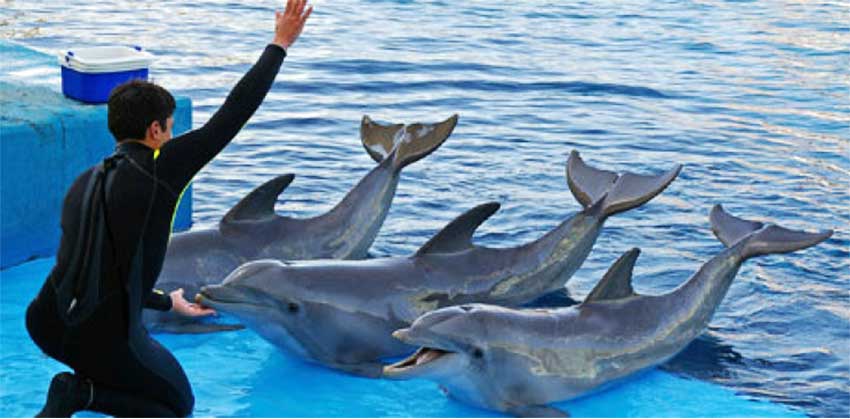THREE environmental groups in Antigua & Barbuda are jointly speaking out in opposition to dolphin captivity, in light of recent developments in St. Lucia, where Dolphin Discovery, the Mexican swim-with-dolphin (SWD) attraction that fled Antigua in 2004 after major controversy, is seeking to build a new dolphin facility.
The Antigua Barbuda Independent Tourism Promotion Corp. (ABITPC), the Antigua Conservation Society, and the Environmental Awareness Group (EAG) have come together to share their common concerns on the issue, as they feel that SWD attractions give countries a negative image and also create many environmental problems. The environmental groups are concerned with Antigua & Barbuda being viewed as regressive instead of progressive, should a SWD attraction return to the island.
In a press statement this week, the three groups said: “After the release of the award-winning documentaries The Cove and Blackfish, western tourists are increasingly uncomfortable with captive dolphin attractions. Consequently, TripAdvisor, the world’s largest online travel website, with 690,000 attractions listed and 385 million reviews, is no longer promoting/selling excursions to any attractions that involve interaction with wildlife, which includes SWD attractions.
“Virgin Holidays is continuing to progress its policy on suppliers that have captive dolphins – it no longer works with any supplier that uses wild-caught dolphins already, and that policy has evolved further, to no longer working with any new captive dolphin attractions, which any new facility built in Antigua & Barbuda (or St. Lucia) would be considered.
“When travel companies start reconsidering their relationship with suppliers that have captive dolphins, countries must think very carefully before committing to new attractions”.
According to the groups, various countries, including Switzerland, Argentina, the United Kingdom, Brazil, Italy, and New Zealand, among others, prohibit or severely restrict and regulate some aspect of the trade and display of live whales and dolphins, such as their holding conditions, capture, import, or export.
They claim there can be significant environmental problems caused by SWD attractions, which include:
• Overgrowth of nearby reefs by algae caused by increased faecal coliforms from concentrated dolphin waste
• Damage to sea grass beds and reefs during construction of dolphin pens
• During severe weather, including hurricanes, dolphins can escape, leading to contamination – genetic and pathogenic – of local free-ranging dolphin populations
According to the groups, WDC (Whale and Dolphin Conservation) documented many welfare incidents in the Caribbean in a 2010 paper called “Captivity in the Caribbean.” In one facility in Antigua, dolphins were found to be “unusually dark” due to shallow enclosures and subsequent sunburn; some were found to be held in isolation for training purposes; and some were exposed to polluted water.
They said: “Under the past government of Antigua & Barbuda, a law was proposed to prohibit the display of captive dolphins, which would be a major step forward in presenting Antigua as a country protecting its environment. The bill was presented to the Cabinet several times and was very close to being passed into law when a change of government took place in 2014 just before the bill was finalized. There is presently a move underway to revive the bill and it is hoped that in the near future Antigua & Barbuda will join progressive countries protecting their marine environment by banning captive dolphin display.
In light of Dolphin Discovery’s attempt to establish a SWD attraction on St. Lucia, the three environmental organizations on Antigua said they were greatly concerned about the possible reintroduction of a SWD attraction on Antigua and were speaking out to be sure the Antiguan public is aware of “the facts”.













1 Comment